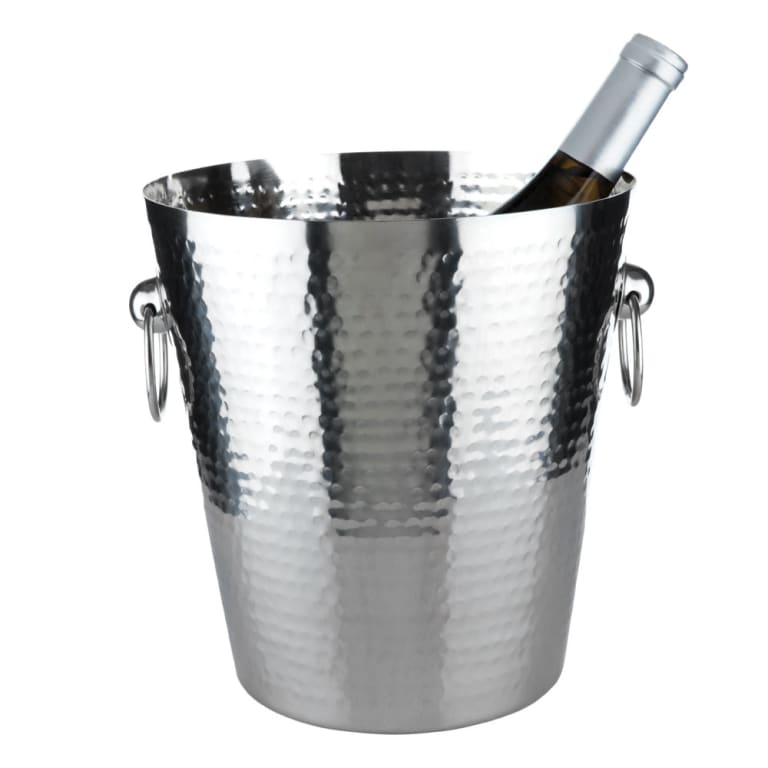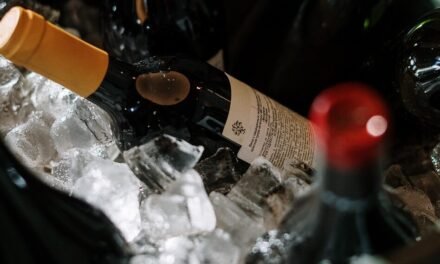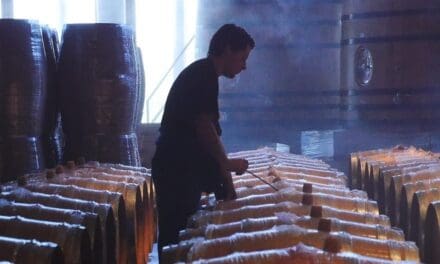The serving temperature is the temperature a wine has (or should have) at the moment of serving. It doesn’t refer to the surrounding (room) temperature, but to the wine temperature. The best serving temperature can differ significantly from the optimal storing temperature.
When serving wine at the right temperature, you will enhance the drinking temperature for your guests massively. In the following paragraphs, we will discuss the optimal serving temperature and its importance.
WHY IS THE SERVING TEMPERATURE OF WINE IMPORTANT?
The serving temperature impacts the smell and taste of wine massively. Fine wines especially develop their full flavor, aroma, and body only at the right temperature.
If the serving temperature for wine is too high, the wine might taste soupy. That means its flavors are blurred and lose their balance. In many cases, a wine that is too warm is overpowering because it is much sweeter or spicier than it should be. Also, the taste of alcohol becomes more notable, and sometimes the wine tastes bitter.
On the other hand, serving wine too cold will mask its aromas. It will taste dull. You will neither be able to get the full taste nor smell of it, and harm your experience significantly.
Be aware that the serving temperature always has to be aligned with the right portion size. Serving too much wine will likely result in the wine heating up beyond the perfect temperature before the drinker has finished it.
By serving wine at the right temperature, you ensure that you can taste all of its flavors and aromas and enjoy it to the fullest.
THE OPTIMAL SERVING TEMPERATURE FOR WINE
The ideal serving temperature ranges from 43° to 68°F (6-20°C) depending on the type of wine:
Optimal Serving Temperatures for Different Types of Wine
- If wine is served warmer than 68° Fahrenheit (20° Celsius), it is too warm.
- The older and richer a wine is, the warmer it should be served.
- The warmer the room where you serve the wine is, the cooler the wine should be.
- Use a fridge or a bucket filled with ice and water to cool wine down.
- You can use a freezer as well, but that should only be your emergency solution.
HOW TO BRING WINE TO THE RIGHT TEMPERATURE
To bring your bottle of wine to the right serving temperature, you have different options:
- Place the bottle in the refrigerator. For most wines, this is the best way to chill them before serving.
- Put the wine into the freezer. This is a good way to cool it down rapidly, but it is not appropriate for all kinds of wine. Also, don’t let your wine freeze, as it can harm aromas.
- Chill the wine in a bucket filled with ice cubes and water.
- Instead of cooling the bottle, you can also chill the glasses by putting them into the fridge before filling them.
- Finally, you can serve your wine on the rocks. For many wines, this is not a great option, though. As the ice cubes melt, they will water the wine down and distort its aromas.
- In case, you want to heat wine that you stored in a cool area to room temperature, you can leave it in a decanter.

Stainless-Steel Ice Bucket
$49.99
from: Wine.com
THE RIGHT SERVING TEMPERATURE FOR RED WINE
Serve red wine cool, at about 55-65°F (13-18°C). There is a common misconception that says red wine should be served at room temperature. But that is not true. The best drinking experience calls for slightly chilled red wine.
For lighter-bodied wines like Pinot Noir, temperatures at the lower end of the range are fine. To enjoy high-tannin wines with a full body like Bordeaux or Merlot, stick to the upper end of the range.
Put the wine into the fridge for about 30 to 45 minutes before opening it to bring it to the right temperature. Alternatively, you can put it into the freezer for up to 15 minutes to achieve the same result. After uncorking the bottle, leave it open on the table, so it can slowly warm up.
THE RIGHT SERVING TEMPERATURE FOR WHITE WINE
The best temperature to serve white wine is between 45 and 60°F (7-15°C). The lower end of this range is about right for light, fruity wines. Serve it at no more than 50°F (10°C). Full-bodied whites like Chardonnay or Sauvignon Blanc taste better when served between 50 and 60°F (10-15°C).
Put it into the fridge immediately after buying it, or leave it in the freezer for half an hour before opening it. Do not place the open bottle on ice, though. Instead, let it sweat and warm up slowly.
THE RIGHT SERVING TEMPERATURE FOR ROSÉ WINE
Rosé wine should be served cool at 46 to 57°F (8-14°C). Typically, you should aim for about 50-57°F (10-14°C) when serving it with food. As a refreshing drink on a hot summer day, Rosé at 46-50°F (8-10°C) is fine, too.
To bring Rosé to the right temperature, put the bottle into the fridge for about one and a half-hour. Make sure to remove it about 30 minutes before serving it. You can also use a bucket with 50% ice and 50% water and place the bottle in it for 15 minutes.
THE RIGHT SERVING TEMPERATURE FOR SPARKLING WINE AND CHAMPAGNE
The ideal serving temperature for sparkling wines is between 43 and 54°F (6-12°C).
Serve sparkling whites, including Prosecco, at about 43-46°F (6-8°C). Sparkling reds taste better at temperatures of 50-54°F (10-12°C).
For sweeter and non-vintage Champagne, aim for a temperature between 43 and 46°F (6-8°C). For fine Champagnes, the best temperature is slightly higher: 46-50°F (8-10°C).
Especially for Champagne, it is not easy to find the exact right temperature. On the one hand, the carbon dioxide that creates the typical bubbly experience will escape rapidly if a bottle is too warm when opened. But on the other hand, great Champagne can’t develop its full taste when served too cold.
Unlike wine, you should never put Champagne in the freezer. To chill it, place it in the bottom part of your fridge for three to four hours before serving it. Instead, you can also use a bucket filled with 50% ice and 50% water. Make sure to cover the bottle up to its neck. Leave it in the bucket for at least 30 minutes, and do not open the bottle until you want to serve it. Your glasses should have room temperature, so don’t prechill them. Also, never drink Champagne on ice (“on the rocks”).
THE RIGHT SERVING TEMPERATURE FOR FORTIFIED WINE
The best temperature for serving fortified wines ranges from 50 to 68°F (10-20°C). Pale cream Sherry takes the lower end of this range. For Marsala, aim for 55-57°F (13-14°C). Tawny Port or Amontillado Sherry should be slightly warmer at around 57-59°F (14-15°C). The upper end of the range is fine for Vintage Port.
In most cases, 30 minutes in the fridge are enough to cool it down to its serving temperature.
THE RIGHT SERVING TEMPERATURE FOR DESSERT WINE
Unfortified dessert wines should be served chilled at between 43 and 55°F (6-12°C). The lower end of the range is best for Ice Wines and Tokaji, while you should aim for the upper end when serving Sauternes.
To bring dessert wine to serving temperature, put it into the fridge for about one hour or into the freezer for 20 minutes. When the bottle is perceptibly cool but not icy, you can serve it.
FINAL WORDS
With the recommendations in this article, you are prepared to serve the wine of your choice at the right temperature. When in doubt, do not hesitate to ask your retailer for advice.






